What does it mean to be like a mushroom? For humans, fungi are both medicine and poison: we eat them in life, and they eat us in death. They are the largest and oldest organisms on earth, more genetically related to animals than plants. Without fungi, life would likely have never exited the oceans to reside on land, thanks to their unusual partnerships formed across species. It is not an exaggeration to claim that fungi have shaped life on earth more than any other life form.
To put it simply: fungi are ancient, vast, and unknowable—a perfect earthly other. For a musician like Björk, whose musical prose has tackled everything from dark matter to the extreme limits of the human voice, it is almost surprising that it has taken her over four decades into her career to examine mycelial life as the object of her art. That she has chosen to explore mushrooms at this stage in her career seems to be a product of the environment it was produced in.
Björk began writing what would become FOSSORA in 2019, following the death of her mother, environmental activist Hildur Rúna Hauksdóttir. With the world soon brought to a standstill by COVID-19, Björk shipped everything she owned in New York back to her native Iceland, where she bunkered down in her cabin and began composing new music. While FOSSORA may be a pandemic album incubated in personal loss and solitude, it does not submit to grief like her previous album, VULNICURA. Instead, she takes a life-affirming approach to a broken world, producing work that sees sheltering as an opportunity for growth. Her mushroom album is staged in this realm of ruin and possibility.
Choosing the symbol of the mushroom may seem like an obvious or overwrought metaphor, but Björk’s treatment of the subject delves far below the surface level. Take the name: “Fossor” is the Latin word for one who digs ditches, graves, or mines. “Fossora” is an ungrammatical feminine tense of this word that Björk invented to capture her identity on this album: she who digs. Death and motherhood are given equal weight in her calculus—the fossora is a woman who births life out of burial. This function is also one of the most vital functions that fungi provide to ecosystems: decomposing dead bodies and restoring nutrients into the soil to continue the wheel of life. Digging inward to create a burrow is an animal instinct to create a haven from predators in the world above ground. In FOSSORA, Björk does the opposite: following the path of fungal networks, she digs outwards in search of sustenance and growth, a strategy that provides greater risk and greater reward.
Unlike a tree with a root system, fungal networks are decentralized structures with no center. Appropriately FOSSORA is not simply about motherhood, love, grief, or nature—it is an album about how all of these things twine together and form the fabric of our world. While the album might easily be labeled as “subterranean” or “psychedelic,” these adjectives lend themselves to a reading that is too simplistic. FOSSORA allows listeners to approach the world through Björk’s interpretation of mushroom logic through its structural, lyrical, and sonic elements.
—
“We stayed / In one place long enough / To shoot down deep hyphae roots”
Fungal networks are composed of hyphae: thin strings of cells that independently grow outward in search of food. Collectively, these clusters are referred to as mycelium, a network in which countless hyphal strands commingle and interact. Mushrooms are the culmination of these networks—the point at which threads of hyphae felt together and are inflated with water from other parts of the network to produce spores. Thus, to describe FOSSORA as a “mushroom album” is to speak not only of the fruiting body but the living process of interactions that follow from strand to spore.
Björk has never shied away from incorporating the physical characteristics of nature into the composition of her work. This was most apparent in BIOPHILIA, where she played with unusual time signatures, patterns, and instruments to imitate natural phenomena such as the movement of tectonic plates or the cycles of the moon. While the subtle implementation of fungal characteristics may not be as apparent in FOSSORA, they are more consistent and successful compared to her earlier sonic experiments—“Mycelia” in particular is the simplest illustration of how Björk incorporates this into her music. Unquestionably her most fungally structured song, it depicts how mycelium grows and spreads through the soil. While on the surface it appears as nothing more than an interlude, it serves as a key to understanding how more subtle variations on mushroom logic play out throughout the album; it begins with strings of notes pushing outwards in numerous, seemingly unaligned directions, and after nearly a minute, these polyphonic threads weave together to harmonize in chordal structures to reveal the inner order behind the song: the reproductive fruit that allows the song to continue. Then the cycle repeats, fading out on a staccato that serves as an ellipsis. We can imagine this song looping over and over with endless variations.
Mycelial growth begins as a question: what are the limits of my environment? In Entangled Life, the biologist Merlin Sheldrake writes about how mycelium is polyphony in an embodied form. In a polyphonic song, each voice serves as a hyphal tip exploring the landscape, carried by the task of continuity. In his words, “although each is free to wander, their wanderings can’t be separated from the others. There is no lead tune. There is no central planning. Nonetheless, a form emerges.”
Björk experiments with polyphonic elements throughout FOSSORA most explicitly when she is looking to explore inner conflict, to make order out of confusion. “Victimhood” is an expression of a desire to escape from the trenches of self-pity so deep that she can no longer recognize herself. Feeling “the world owed me love,” thumping clarinets and blaring fog horns pierce through a veil of overlapping sounds that tangle like a thicket of branches, reaching no conclusion beyond the need for escape. In “Sorrowful Soil”, Björk is swept in the roll of emotions that come at the end of her mother’s life. The cacophony of mourning voices is most noticeable in the middle of the song, swelling into an overload of clashing thoughts that eventually stutter into a unified statement: “You did well.”
Polyphony works when seemingly conflicting voices coordinate themselves into a system where multiple perspectives can freely exist in the same space. She doesn’t suggest that this alignment is simple. Connection is an essential theme throughout FOSSORA, and throughout her album, she acknowledges just how difficult finding mutual understanding can be.
—
‘Hope is a muscle / That allows us to connect”
“Are these just excuses not to connect?” On her first track, “Atopos,” Björk proposes an argument: we must connect despite our differences, or surrender to mutually assured annihilation. One of the most pointedly political songs of her career, Atopos resists the idea that calling out behavior can solve the world’s problems. “Our differences are irrelevant. / To insist on absolute justice at all times / it blocks connection.”
Along with her proclamation that “pursuing the light too hard is a form of hiding,” Björk seems to suggest personal distaste for adhering to a moral high ground. Considering her history, her true feelings are undoubtedly more complex—in 2017, at the apex of the #MeToo movement, Björk publicly spoke out against Danish director Lars von Trier in a Facebook post detailing a list of offenses including sexual advances, unwanted touching, and fabricated stories of her “difficult” behavior being shared by the press. In her words, “If being difficult is standing up to being treated like that, I´ll own it.”
So what changed?
Rather than backing down on her prior statement, Björk criticizes the fact that calling out these behaviors treats the symptoms of them rather than addressing the cause, preventing healing and growth. Speaking with the Atlantic, Björk states “If you cancel everyone, that’s not a solution. Especially with younger males, they have to have an opportunity to evolve and grow and learn.”
But what alternatives are possible? Many artists of our time stress the need to chart alternative futures, and like them, Björk is better at diagnosing the issues and asking questions rather than offering concrete answers. Is our union stronger than us? Is hope a solution? Björk claims these inquiries as fact, yet embracing them requires either faith or a new approach to resolving conflict. Regardless, she sets the stakes in clear terms: “If we don’t grow outward towards love / We’ll implode inwards towards destruction.”
In the natural world, fungi can serve as mediators that can alter the competition model of resource scarcity. Hyphal strands primarily seek food, but when some species contact other plants’ roots, they form mycorrhizal networks. Colloquially known as the “wood wide web,” these networks distribute excess nutrients from one plant to another to balance nutrient distribution within an ecosystem. One plant receiving an excessive amount of sunlight, for instance, might funnel its surplus carbon to plants shaded by the leaves of taller trees, in turn receiving different nutrients in exchange.
—
Mycorrhizal networks can also form lines of communication across different species of plants. In one experiment, a plant attacked by aphids triggered warning signals across the mycorrhizal network, provoking a defensive reaction in its neighbors that attracted wasps to kill its prey. While many scientists believe that these networks transmit infochemicals from one plant to another, some are currently working to understand whether these signals might constitute a form of language through electrical signals, like an inter-species nervous system.
Human language by comparison is confined by linguistic barriers that, at their worst, cascade from misunderstanding into distrust, deception, and malice. How convenient it would be to have a language that transcends the limits of our words! Yet music is also a form of communicating abstract concepts through signals. While we may not be able to understand Björk’s Icelandic recitation of Fagurt Er í Fjörðum, we can still feel the frigid sweep of winter in the dirge-like qualities of her song.
Björk’s inclusion of afrobeat, reggaeton, and gabber are other instances of how regional textures can be incorporated into music’s universal tongue, yet in “Ancestress” language demonstrates the limits of what music can convey, as Björk remembers the difficulties translating on behalf of her dyslexic mother as she lays on her deathbed. “She invents words and adds syllables / Hand-writing, language all her own,” she tells us, her mother’s own private language expressing words outside of conventional lexicography. Yet Björk begins this song with a tender moment, remembering as her mother “Sang for me / in falsetto lullabies with sincerity.” In her mother’s final moments filled with pain and mistrust, Björk references back to her initial message of hope in “Atopos,” as she bears the responsibility of being her “hope-keeper.” She is the only one who can carry on the legacy of her mother.
While Björk would come to appreciate the perspective and worldview of her mother, her passing also forces her to acknowledge all that could not be communicated has been lost. “In many ways, I’ve been the matriarch since I was a teenager,” Björk revealed in an interview with O Globo. “When I was a kid I was always trying to teach her how to talk, I was always correcting her, which was really weird. I wish someone had told me back then to let my mother be who she was… there are many ways to absorb the world.”
Like her mother, Björk is also one to coin her own words, such as “matrimort”—another Latinate invention that pairs the words for mother and death that she uses as a description of her lament. As “Ancestress” ends, she embraces the fact that she is the daughter of Hildur Rúna Hauksdóttir, an imperfect woman who she thanks “For her integrity” with a pure expression of feeling. Though they may be separated by death and the words of her mother have been lost, she accepts that the connection they share transcends the spoken word: “I don’t have that story in my mouth / When you die, you bring with you what you’ve given.”
Our human language is insufficient, and while we might hope for a more honest means of communication, a fungal approach to forming connections may only amount to wishful thinking. Biologists like Merlin Sheldrake caution against using mycorrhizal networks as a metaphor for altruistic behavior; while many of these networks are mutually beneficial, fungi remain the arbiters over what resources are shared and in which direction. While one might equate the mycorrhizal network to inter-species socialism, these organisms forge these connections out of self-interest. In certain cases, fungi favor one species over another to siphon resources without aid, or even transmit poisonous chemicals to kill off their competition.
Robin Wall Kimmerer has written extensively about how the English language strips animacy from the natural world by treating living beings as objects rather than subjects. The Potawatomi language is an ongoing topic of her work, a language consisting primarily of verbs that engage with the animate world, such as “being like a hill” or “being like a beach.” In doing so, she examines the dangers of using nature as a metaphor, suggesting that we treat it as an equal actor or “kin” rather than in an anthropomorphic, dominator model. While considering how a threat is communicated across the mycorrhizal network, we might describe a mutualistic response to danger, but we can’t mistake it for empathy. Even an edible mushroom has evolved to be consumed in order to serve its best interests.
To speak of feeling or language in plants and fungi is a slippery slope. For artists like Björk, borrowing the structures and language of nature can offer new paths for growth and connection. Approaching Fossora from the logic of the mushroom, however, we should consider Wall Kimmerer’s distinction between being like the mushroom rather than having the mushroom be like us. We are animals, and we cannot access the benefits of mycelial communication to mend our differences. Music may be as close as we can get to reaching a language of feeling, yet people who enjoy the same songs might find that this is their only point of commonality across vast ideological rifts.
While Björk’s persona blends the realms of animals, plants, fungi, and minerals, she is—and forever will be—human. And what could possibly be more human than hope?
—
‘There’s fear of being absorbed / By the other”
In 1867, the botanist Simon Schwendener proposed a radical theory about lichen: they were not a single species but a composite of two organisms (algae and fungi) living harmoniously. Taxonomists were adamantly opposed to the idea that any relationship between organisms could be anything other than parasitic, as they believed all life forms followed a model of resource competition. Yet Schwendener would be proven to be correct, resulting in the discovery of “symbiosis,” two organisms working together for mutual benefit.
As we have seen from the mycorrhizal network, organisms can exist in relationships that aren’t solely rooted in competition over resources. Lichen is a special arrangement in which multiple organisms are dependent on each other to overcome challenges that cannot be addressed alone. Lichen challenges the very nature of identity itself: when does the I become we?
That kind of symbiosis is essential to Björk’s vision of the mushroom, as she experiments with the doubling of voices and the porousness of individuality. Evolution is a process that takes millions of years to get right and is largely at the whims of chance. Symbiotic organisms can sidestep this process by directly borrowing traits across their partnership, gaining characteristics that cannot be achieved alone. True to the nature of symbiosis, every vocal feature on FOSSORA is sung either in harmony, or structured as a call and response—a clear difference from the artistic kinship she has formed with Arca in her last two albums.
On “Fungal City,” Björk’s joyous duet of renewed love is given vitality through the mystical bravado of serpentwithfeet. Since a young age, Wise has relied on gospel music as a vehicle for expressing his homosexuality, initially expecting a career in opera. Rejected by both conservatories and conservative religion, his vocals achieve a pagan slant that tugs between expectation and revelation, allowing Björk to reach a more elevated ecstasy in her orgiastic celebration of love. While “Allow” was originally written for her last album, her collaboration with Emilie Nicolas helps her achieve escape velocity beyond the earthly realm she sings from, achieving flight in part from her tight-knit collaborations with Arca.
While Björk uses guests as a means to stay airbound in the way a mushroom ejects spores, her personal songs use features tied firmly to her roots. Throughout her career, Björk has juggled the dual responsibilities of her artistic life and her life as a mother, famously attacking a reporter who had been stalking her and her son for days. In FOSSORA, she finally inserts the rest of her family directly into her music. Her son, Sindri Eldon, accompanies her in “Ancestress,” her eulogy to her mother—three generations of her family are fused into a single strand, and individuality is most directly challenged. Together they ask, “Did you punish us for leaving? / Are you sure we hurt you?” blurring the distinction of who the caretaker is. When Björk and Sindri state “You see with your own eyes / But hear with your mother’s,” it may be two mothers being addressed.
Ísadóra Bjarkardóttir Barney, her daughter, also appears on the final track, “Her Mother’s House.” Now brought back home, Björk clings to her maternal nesting instinct as her daughter prepares to live life on her own. An exception to the duet structure that has previously characterized her collaborations, Ísadóra sings a verse asserting her ability to ascend, and Björk acknowledges her departure comforted by a polyphonic lulling that shows that even in their separation, they remain connected. If her album begins with the frustration of being unable to connect, this endpoint caps her journey with the willingness to let go.
Björk’s 2017 album UTOPIA was airy, capturing the joys of rediscovered love. In FOSSORA, these expectations are drawn back to the earth. “Freefall” is a stark outlier in that, rather than having others to fall back on (guest musicians or family), there is no downward direction. In this song, Björk sings alone in a plural perspective about the impossibility of reliving what made a relationship special in the past. At one of the most impactful moments on the album, her voice fragments out of sync as she laments, “If we cling to what we used to be / It will burn our soul / We will get hurt.” The rest of the song changes completely, attempting to regain its shape as it uses the imagery of cosmic bodies to regain structure. Without the tug of gravity pulling her towards an understandable goal, Björk is left with two options: stagnating to a bygone memory to achieve death, or following the inevitable path towards growth.
As scientists have further studied lichen, it has become clear that simple 1:1 pairings are exceedingly rare in nature—composite organisms generally contain dozens of interacting life forms, each with unique motivations for collaborating with other species. While the doubling of vocal features is prominent throughout FOSSORA, the neatness presents a simplified-yet-effective method for capturing conjoined identity found in fungal relationships, even as it belies the complexities of the living world.
—
“Nature wrote this psalm / It expands this realm”
Between mass illness, ecological destruction, economic recession, and the looming threat of nuclear annihilation, we live in a decadent age where there are no clear answers to what the future holds. Yet the mushroom does not care about the outcome. Fungi have thrived in the wake of extinction events, quickly adapting to changing conditions that have allowed them to outmaneuver catastrophic events, generally becoming the dominant species for millions of years in the interim periods and shaping the species that emerge from each ecological dark age.
Near the end of her album, Björk references the resilience of mushrooms in scorched earth: “Even though the ground is burnt / Underneath monumental growth / Fossora.” Matsutake mushrooms were some of the first signs of life to emerge from the radioactive regions of Ukraine and Belarus after the Chernobyl disaster. Neither meteors nor missiles have brought an end to the fungal kingdom, and this is part of what makes mushrooms so alluring in their strangeness: the unusual characteristics that allow them to transmute and defy death while birthing new types of life out of their unexpected collaborations.
Has Björk gone far enough to justify her claim that FOSSORA is her “mushroom album?” While there is certainly evidence to suggest her fungal influences, it is nowhere as oblique as it was in BIOPHILIA. The polyphonic qualities, for instance, aren’t exactly a new feature of her music—its roots can actually be found in some of the earliest Icelandic music. How she employs it, however, seems more intentional than its use on, say, UTOPIA. The doubling effect that Björk employs is new to her, and she has never collaborated with as many guest vocalists as she has on this album. Lyrically, she references mushrooms throughout her album, but is quick to mix metaphors like eggs, roots, and cosmic bodies along with it.
FOSSORA comes at a time of great precarity, yet listening to it one might think otherwise. While others spent their pandemic lockdowns mulling the four walls they were trapped between, Björk reconnected with her Icelandic roots, DJ-ing private shows in her home for old friends and family. She is not indifferent to the problems of the world, but she’s not mired in the extreme emotional states of her previous two albums either. Her album adopts the same autobiographical approach to her work while feeling more relaxed and open to change. Some have criticized FOSSORA as disjointed for this exact reason—unfocused and unable to settle on a single direction. After all, hope as a solution to conflict or catastrophe feels as vague as shrugging one’s shoulders. Yet this decentered approach to her work may be the most fungal trait it offers. It reaches both into the past and towards the future, intersects with diverse subject matter, and is one of her most collaborative pieces to date.
To understand scientific principles like mycology, metaphors are often deployed to explain concepts into terms that we can understand. Ascribing the characteristics of mushrooms onto music, culture, politics, or language will always misrepresent them in some key capacity, particularly given how little we know about them. Yet this imaginative capacity is part of what defines human endeavors, and is part of what makes Björk’s album a remarkable piece of speculative optimism. Maybe art can’t save the world, and maybe fungi will outlast us, but if we have any chance at all of finding a better way to live, there is value in looking toward the creative and connective possibilities that the mushroom offers, shooting down “roots that penetrate concrete and plastic.”


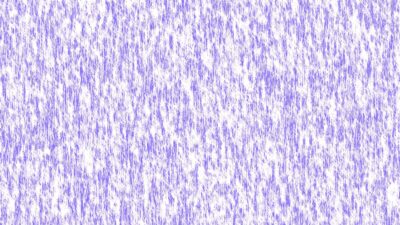
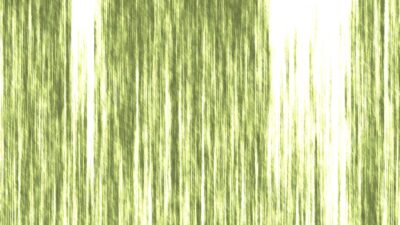
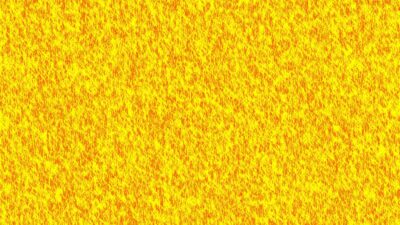

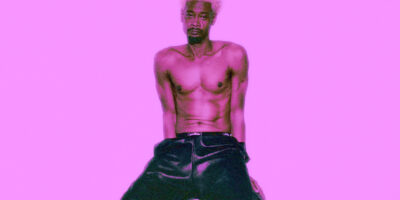
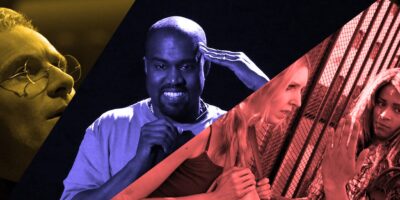
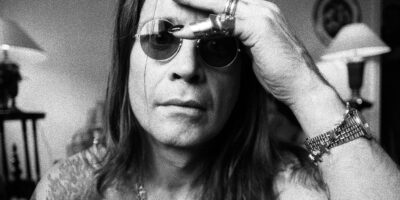



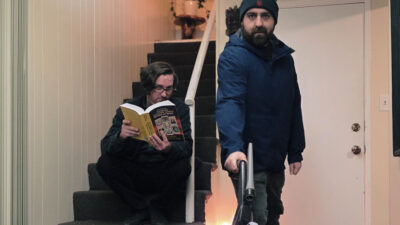
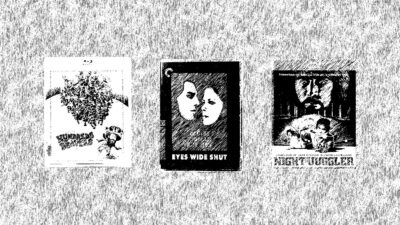

Comments